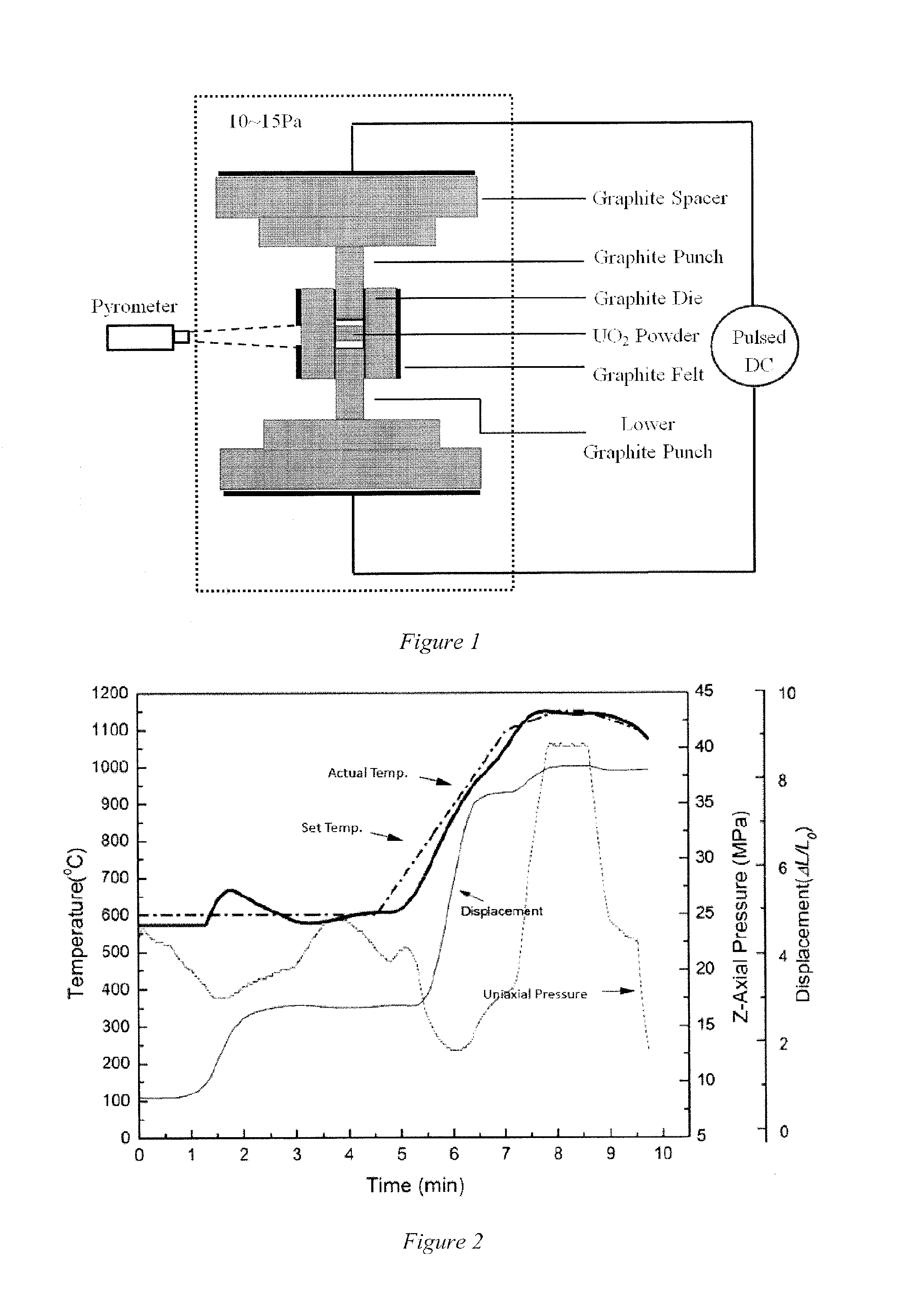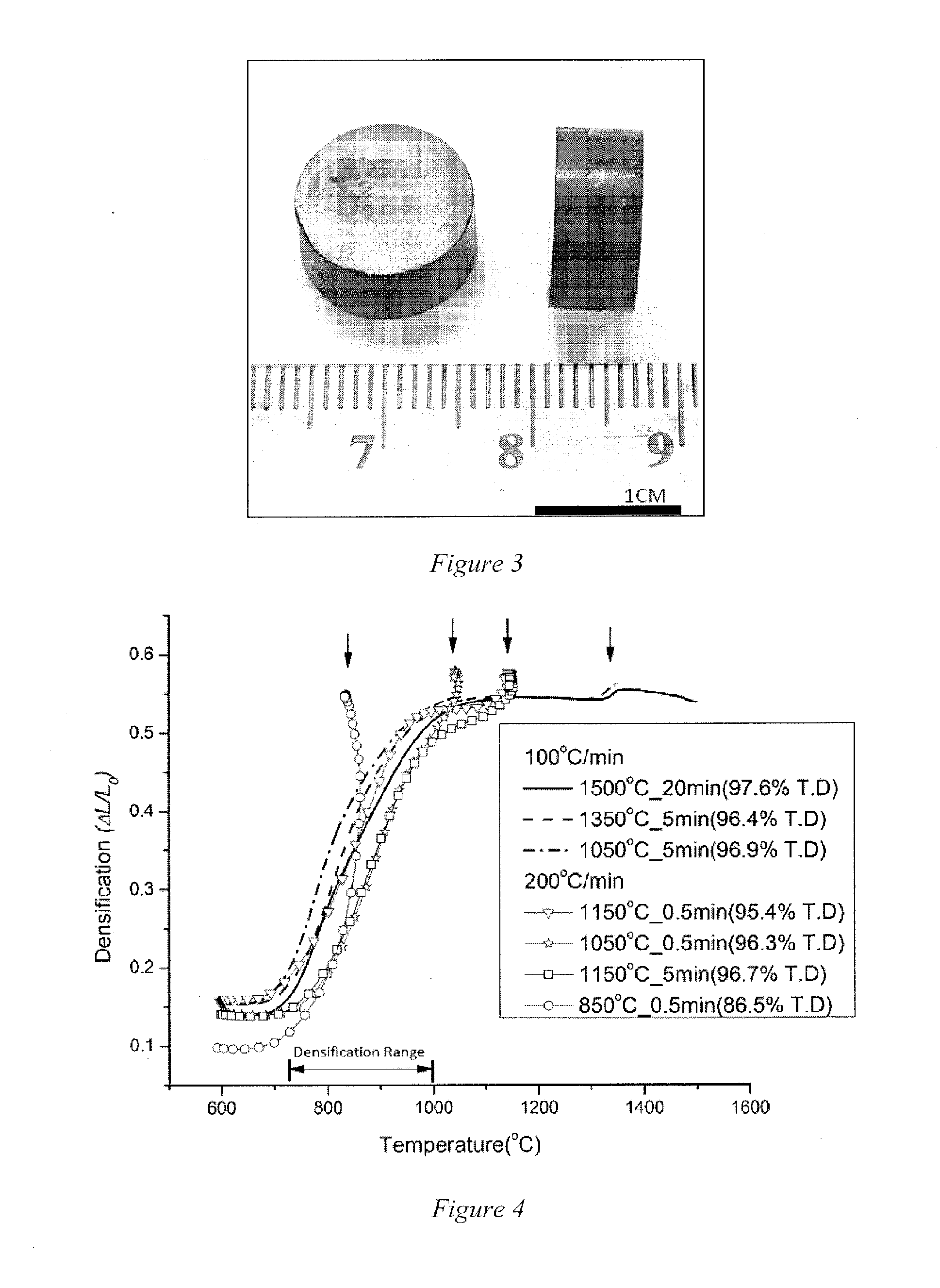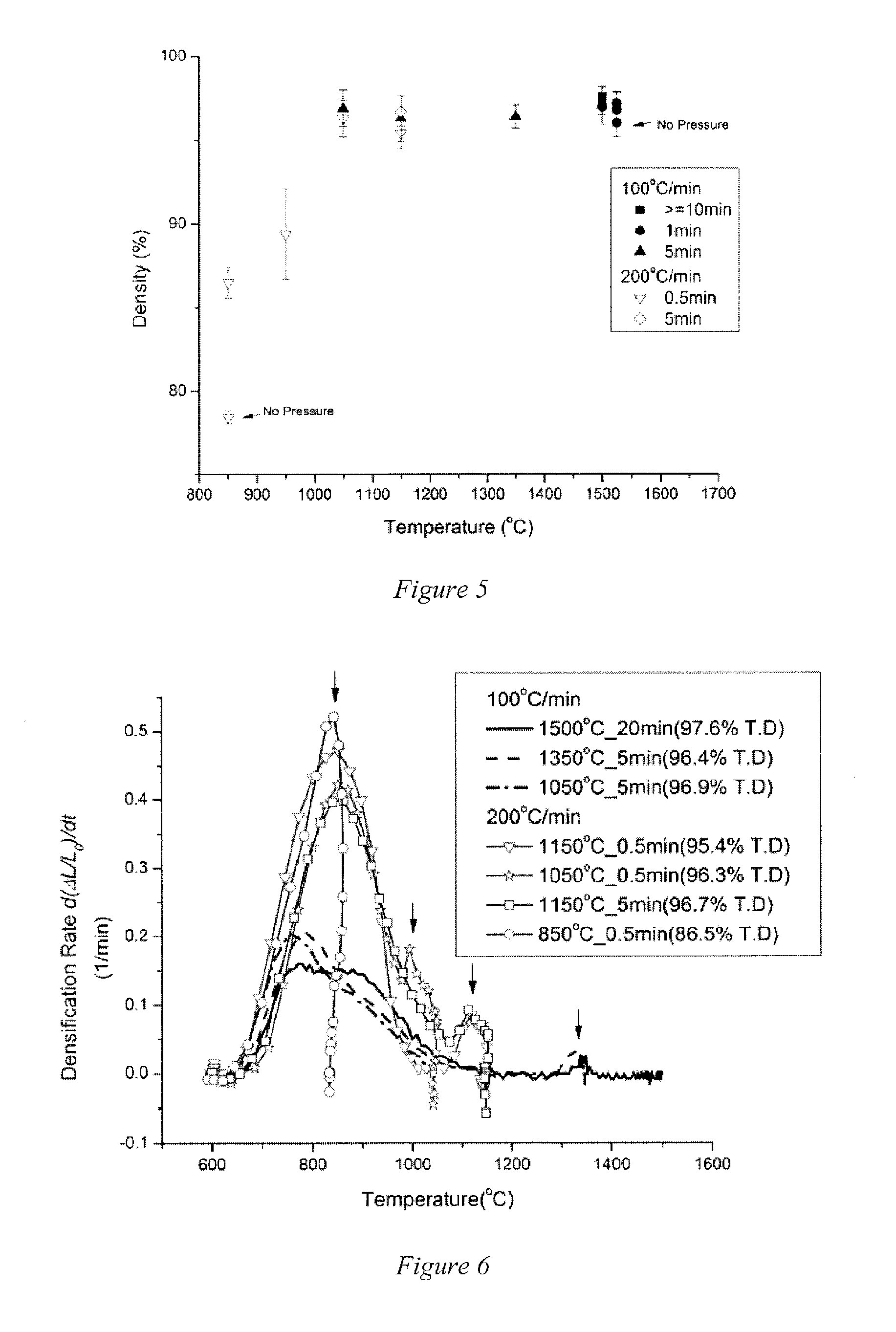High density u02 and high thermal conductivity uo2 composites by spark plasma sintering (SPS)
a high thermal conductivity, composite technology, applied in the direction of nuclear elements, greenhouse gas reduction, reactor fuel susbtance, etc., can solve the problems of large cracking of fuel pellets, high centerline temperature, and cracks adding to the release of fission product gases
- Summary
- Abstract
- Description
- Claims
- Application Information
AI Technical Summary
Benefits of technology
Problems solved by technology
Method used
Image
Examples
Embodiment Construction
[0051]Embodiments of the invention are directed to the preparation of superior fuels for nuclear power plants comprising UO2, other metal oxides, metal nitrides, or their composites with high thermal conductivity materials. The UO2 can have up to 19.9 percent U-235 enrichment. The UO2 can contain other fissionable isotopes, such as thoria or plutonia. The superior fuels are enabled by employing spark plasma sintering (SPS) as the method of preparing the fuel pellets. Spark plasma sintering (SPS), also known as pulsed electric current sintering (PECS), is a field assisted sintering technique that allows production of fully dense materials while applying high heating rates and short dwell times. A pulsed DC current is passed through the punches, die, and, in some cases, the specimen, depending on its electrical properties. SPS is a technique that has been developed for the rapid densification of ceramic materials, hard-metals, cermets, Al-based alloys, and other metallic powders. In e...
PUM
 Login to View More
Login to View More Abstract
Description
Claims
Application Information
 Login to View More
Login to View More - R&D
- Intellectual Property
- Life Sciences
- Materials
- Tech Scout
- Unparalleled Data Quality
- Higher Quality Content
- 60% Fewer Hallucinations
Browse by: Latest US Patents, China's latest patents, Technical Efficacy Thesaurus, Application Domain, Technology Topic, Popular Technical Reports.
© 2025 PatSnap. All rights reserved.Legal|Privacy policy|Modern Slavery Act Transparency Statement|Sitemap|About US| Contact US: help@patsnap.com



